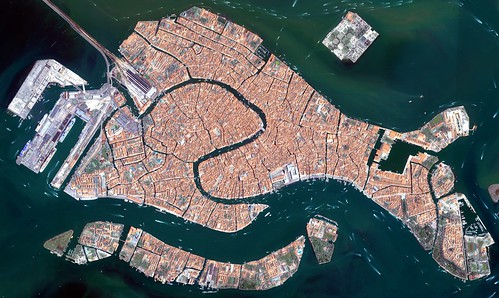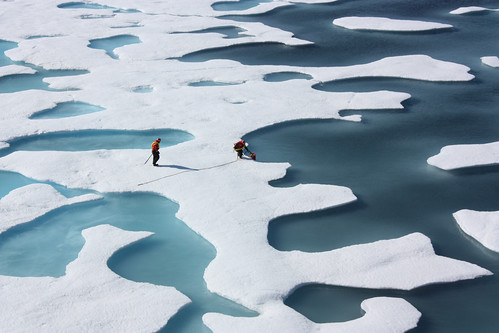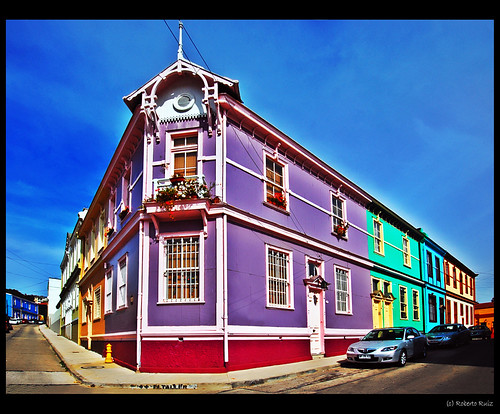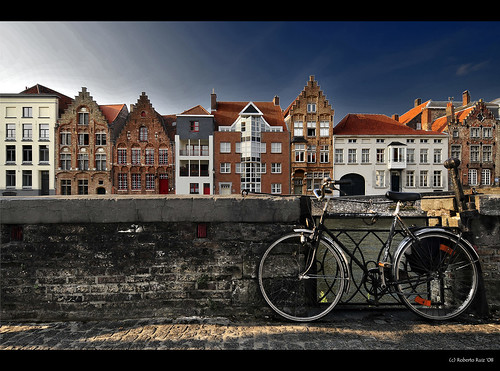
Earth From Space: Floating city, originally uploaded by europeanspaceagency.

The Château de Chantilly (pronounced: [ʃɑ.to də ʃɑ̃.ti.ji]) is a historic château located in the town of Chantilly, France. It comprises two attached buildings; the Grand Château, destroyed during the French Revolution and rebuilt in the 1870s, and the Petit Château which was built around 1560 for Anne de Montmorency. Owned by the Institut de France, the château houses the Musée Condé, which is one of the finest art galleries in France and is open to the public.

A visit to Greece allows the opportunity to go back through the corridors of time with some of the most awesome archaeological sites in the world. Greece is literally a network of the remains of civilizations that date from as far back as the prehistoric times and weaves its way through early historic, Roman and Byzantine periods. Here are 10 of the best of the archaeological sites in Greece:
Sitting on the highest point and overlooking the city is the “Citadel of Athens.” One of the most significant monuments and testament to the great architectural heritage of Greece, the Acropolis was a brainchild of the statesman Pericles and built during the 5th century. This ancient religious site bears the remains of a number of temples and statues including the Propylea Gateway, the Parthenon, the Erechtheum and the Theatre of Dionysus. Most of the artifacts found during the excavations are now displayed in the Acropolis Museum.
Delphi is most famous for the legendary and influential oracle found in numerous ancient Greek writings and is situated in central Greece on the slope of Mount Parnassus. Legend has it that the Greek god Apollo used the oracle to speak to humans through a medium called the Pythia, or a priestess of the Delphi. Discovered in 1893, the site today is one of the most popular tourist attractions in Greece with its spectacular remains of the Temple of Apollo, the Stadium, Athenian Treasury and the Altar of the Chians among others.
Also known as the Island of Apollo, this small but historically significant sanctuary is located in the heart of Cyclades just miles away from Mykonos. During the ancient times, it was the center of religion, trade, commerce and politics and its discovery in 1873 was monumental in that it bore testament to a highly advanced civilization. Must-sees include the Agora, the Temple of the Lions, the Sanctuary and the Theatre District.
The site of the first Olympic games and an ancient sanctuary, the site was first discovered and excavated in 1829. Ancient Olympia was situated in Peloponesse and has been declared a UNESCO World Heritage Site in 1989. Today, the town is a flourishing community of municipalities and subdivisions. Visitors to the ancient ruins can still see impressive monuments such as the Stadium, the temples dedicated to Zeus and Hera and the Palaestra.
Another legendary site is Knossos, the largest and best preserved archaeological find from the Bronze Age and the remains of the great Minoan civilization. The grand Palace of Knossos was home to King Minos and the setting for many heroic tales and epics including the Minotaur in the Labyrinth and Icarus. Aside from the palace visitors can see the Royal Villa, the intricate frescoes on the walls and the Minoan Columns.
Also known as the Archaeological Site of Agai (or Aegae), this ancient Macedonian capital was brought to global attention in 1977 with the discovery of the burial site of the kings of Macedon including Philip II and Alexander IV. Valuable artifacts found in the site are now housed in the Great Tumulus Museum.
According to legend, Asklepios was a god of medicine and was worshipped in the city state of Epidaurus in Ancient Greece. A huge sanctuary was built in his honor (the “Asclepieion) and became the center of activity in Epidaurus with throngs of people coming to find healing for their conditions. Other majestic ancient monuments uncovered in the site include the theatre, palace and tombs.
Situated in the island of Rhodes is the citadel of Lindos, an ancient fortified area that has been in existence since the 10th century BC. It was an important trading post in the 7th to 6th centuries BC but declined in significance after the rise of Rhodes in the 5th century. The most important find is the Doric Temple of Athena along with the Propylaea and the Hellenistic wall.
From the Greek word which means “suspended in the air” the Meteora Monasteries have come to be known as one of Greece’s most impressive sites. It is a community of six Greek Orthodox monasteries started and built during the 9th century on rock pillars and along high mountain walls at the edge of Thessaly and along the Eastern Pindus Mountains. In the old times, the only way to get to the monasteries was by hoisting up long ladders or large nets. Today, visitors can reach the place through staircases that were made from the rock formations.
The once mighty and glorious civilization of Mycenae is situated on a hill in Northeastern Peloponnese in Argolis. From the 5th to the 1st century BC, Mycenae was the political, cultural, religious and military center so much so that the period has come to be known in Greek history as Mycenaean. Vestiges if its grandeur can still be seen in the citadel ruins – the Lion Gates, Treasury of Atreus and Grave Circle A are among the impressive architecture that can be seen in the site.
By Raphael Kadushin
Olive oil may have only recently found a firm place at the American table, next to that smug pat of butter. But in the Mediterranean, where groves of olive trees are a fixed part of the landscape, the oil has liberally infused the culture and cuisine for millennia. Now certain epicenters of the liquid gold—Spain, France, Greece, andItaly—have witnessed a resurgence of smaller, artisanal olive oil producers that are welcoming visitors and helping fuel a local celebration of this ancient cash crop. That means travelers can map their own olive oil odyssey—one that leads from the olive estates themselves to olive oil tastings, boutiques (where the stock is bottled to clear customs), festivals, and meals overseen by an olive oil sommelier.
The 17th-century Moulin Jean-Marie Cornille (www.moulin-cornille.com) sits in Provence’s Vallée des Baux, one of France’s olive oil centers, and is considered by some chefs one of the most authentic olive mills in the country. Visit in late October and November to watch the granite millstones crush the harvest of tiny green and brown olives. Year-round, the Moulin features a film on olive oil production and a degustation of three types of the cold-pressed house specialty. Stop at the nearby boutique Jean Martin for a variety of Provençal olive oils, sauces, fig confit, and cooking classes ($26 per person).
Just below the Sierra Subbética Mountains in the southern Spanish province of Córdoba, the Núñez de Prado family (www.nunezdepradousa.com) has been producing olive oil on the single-family estate since 1795, using olives handpicked from their groves. Visitors can watch the seven varieties of estate olives get crushed in the 18th-century mill. After the demonstration, move on to a tasting (by appointment) of the organic result, roused by hints of almond, oranges, and apples, which is a favorite of the Spanish royals. The neighboring whitewashed town of Baena continues the fruity education at the Museo del Olivar y el Aceite (www.museoaceite.com), housed in its own antique mill. In November, Baena hosts an annual olive and olive oil festival that climaxes with a tapas crawl through the town’s cafés where chefs compete to serve the most creative olive-based plates.
Any olive oil quest should include Greece, where olive-leaf wreaths were the original Olympic crown and where the fruit has been cultivated for 4,000 years. The prefecture of Lakonia in south-central Peloponnese is known for the groves of Koroneiki olives that produce a fruity olive oil. The central Lakonian town of Sparta features the Museum of the Olive and Greek Olive Oil (www.piop.gr), where fossilized olive leaves from Santorini date back 60,000 years. The neighboring family-owned Olea olive oil estate (www.oleaestates.com) in the Valley of Sparta offers visitors estate tours, tastings, and excursions to the Caves of Diros.
Armando Manni was a film director before deciding to take over an ancient grove in Italy, scientifically refine olive oil production, and launch his Manni Oils(www.manni.biz)—part estate, part chemistry lab—near Montalcino, Tuscany. Working with the University of Florence to create a unique methodology called Live Oil, he produces an organic extra virgin olive oil high in antioxidant value and low in acidity. After sampling his oil (arrange tastings in advance), visitors can hike to the top of Mount Amiata for a memorable view over the olive groves and to the sea.
A tilt-shift video by Joerg Daiber.
Locations: Agios Nikolaos, Spinalonga, Kritsa, Katharo, Pitsidia and Matala on Crete, Greece.
Shot with Lumix GH2, Gorillapod, 14-140mm and 7-14mm Lenses.
Post with Final Cut Pro and After Effects.
Music: Greece by Gayle Ellett.
The pretty side of the financial crisis.
Watch full screen!
onedayonearth.org
ONE DAY ON EARTH creates a picture of humanity by recording a 24-hour period throughout every country in the world. We explore a greater diversity of perspectives than ever seen before on screen.
We follow characters and events that evolve throughout the day, interspersed with expansive global montages that explore the progression of life from birth, to death, to birth again. In the end, despite unprecedented challenges and tragedies throughout the world, we are reminded that every day we are alive there is hope and a choice to see a better future together.
Founded in 2008, ONE DAY ON EARTH set out to explore our planet’s identity and challenges in an attempt to answer the question: Who are we? Please help us tell this story: 101010donate.org
Many thanks to the contributors of One Day on Earth, Vimeo, Ning, United Nations, and the 60+ non-profits for making this happen.
Director: Kyle Ruddick
Producer: Brandon Litman
Co-producer: Daniel Lichtblau
Production Supervisor: Gina Nemirofsky
Editors: Michael Martinez & Javier Alvarez
Trailer Editor: Michael Martinez
MUSIC BY: Joseph Minadeo and Beirut Images and
Stories in this trailer by: 350.org Abdessamad Idrissi Ada & Kris Chmielewski Aditya Kolli Adonis Pulatus Alex M Alexander Alexandros Hadjicostas Ali Azhari Ben Klein Black Pencil Project Brandon Litman Bronek Kaminski Bryon Evans Capi Baigorria Chi Kong Lui Chris Todd Christian Ducken Clifford W Klima Daniel Chung Daniel Lichtblau David Ahrendts David Aufdembrinke Demeocq Dimitri Ellerington Dimitris Christopoulos Enrico Trippa Even Q Fendi Shareef Franz Walter Gema Interiano Gregory Hall Hae Jung Hofman Husam Al-Sayed Itcho James Travis III Jay Galvan John Miller John Rinker Jon Carr Jonathan Sterkenburg Juan Garcia Juhani Väihkönen Karl Hillcoat-Williams Kieran Ball Kreshnik Berisha Kyle Ruddick Luke Younge Marcel van der Steen Mark Eby Michael Diiorio Michael Martinez Miklos Volner Moaez Saeed Mohammadreza Shams Napali NASA Nita Deda Olakunle Idowu Ombajo Misava Edward Paul Johannessen Peter Beier Philippe Kiener Phil Klein Ramda Yanurzha Ray Paunovich Renee van der Sluis Richard Liston VIII Rick Rashid Ryan Green Siraj Shahjahan Steve Romano Suporn Shoosongdej Tamir Naber Tato Carrillo TEDxRainier Tej Gyan Foundation Tim Courson Todd Brown Torsten Lohrmann UNDP Bahrain UNDP Congo UNDP Kenya UNDP Kuwait UNDP Nepal United Nations Development Programme Video Volunteers Wes Davis Yll Citaku Zeenat Munir







![last sighting, mount rushmore [L1008246]](http://farm7.static.flickr.com/6207/6104961055_c2e24cac96.jpg)
